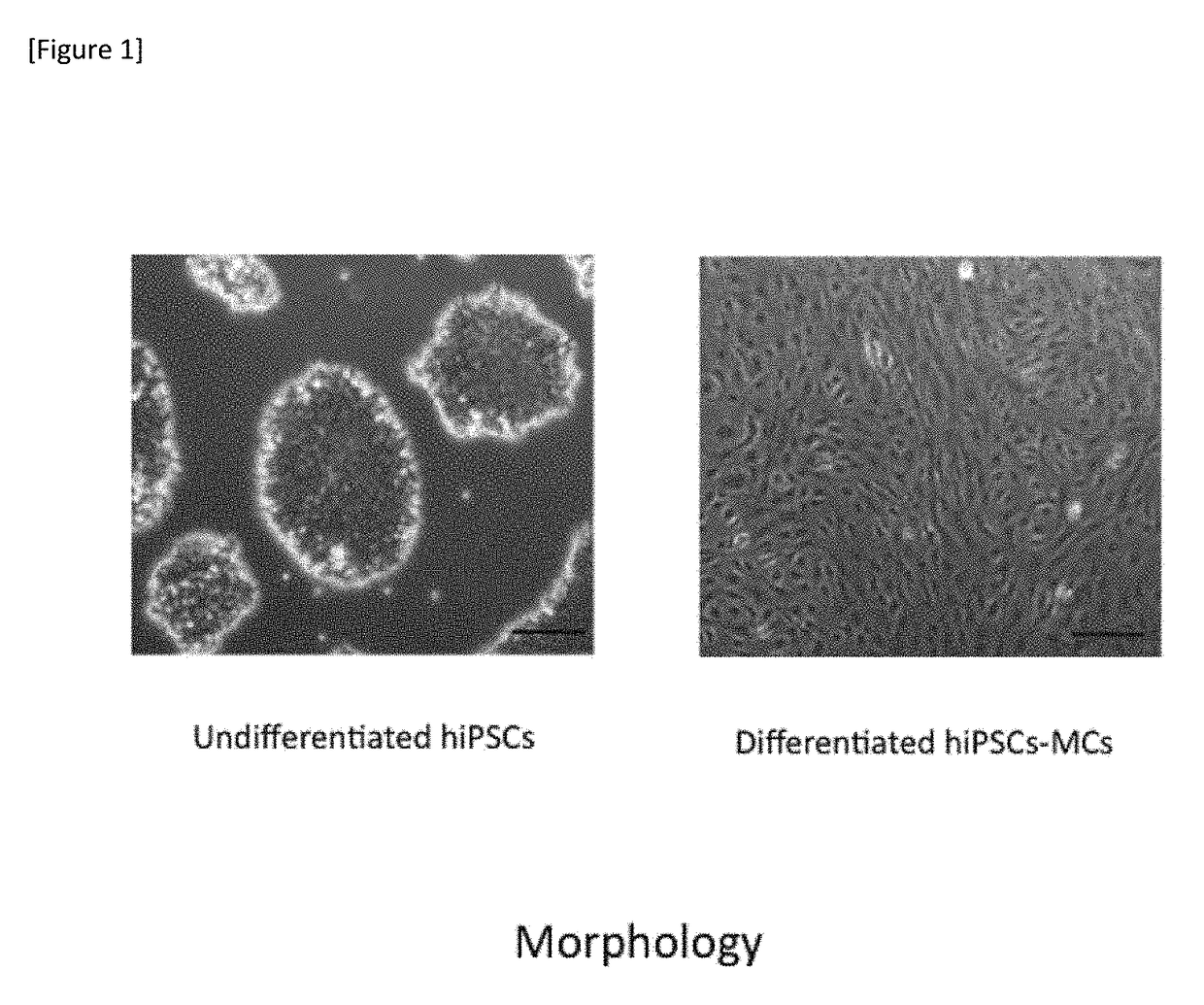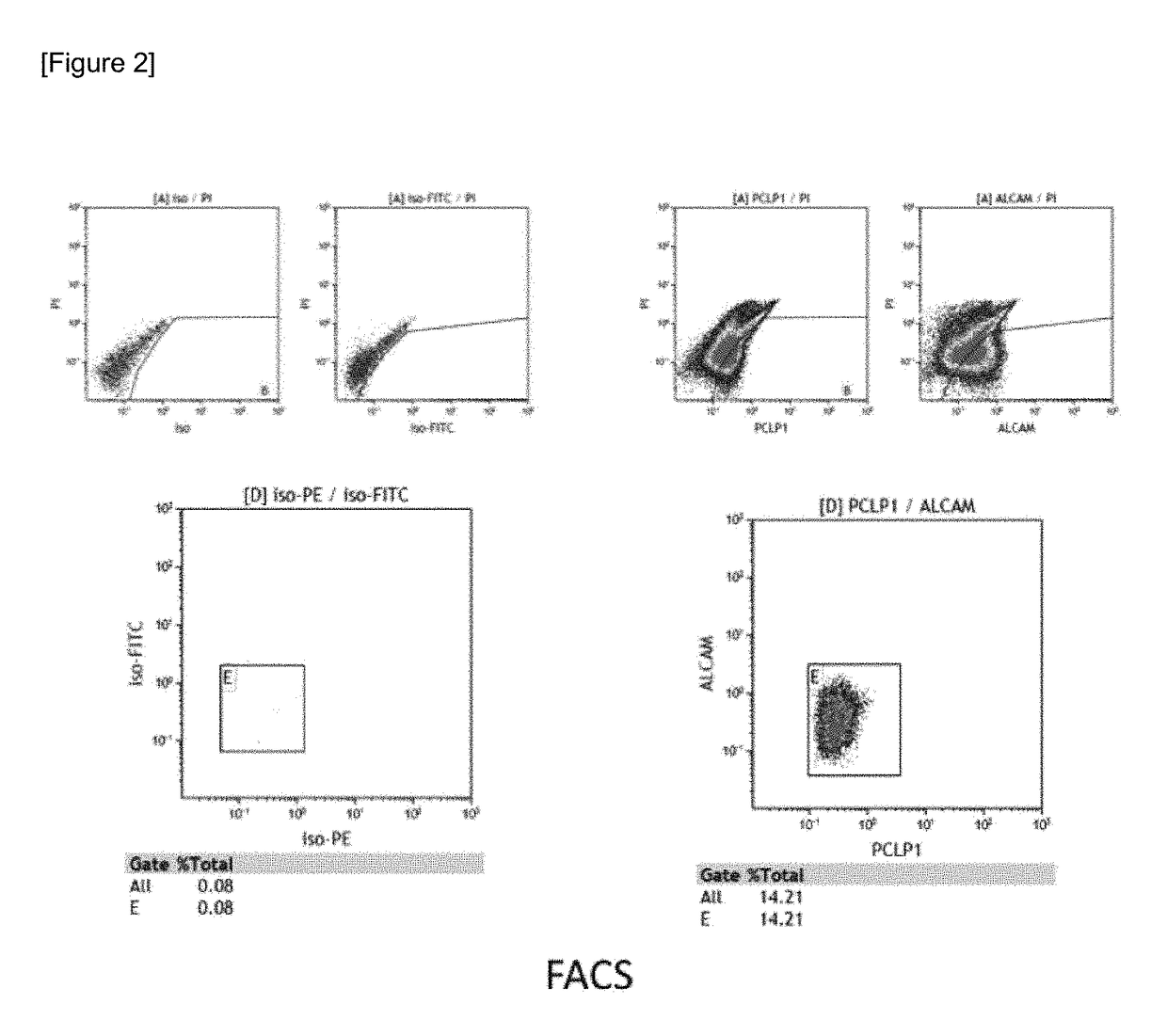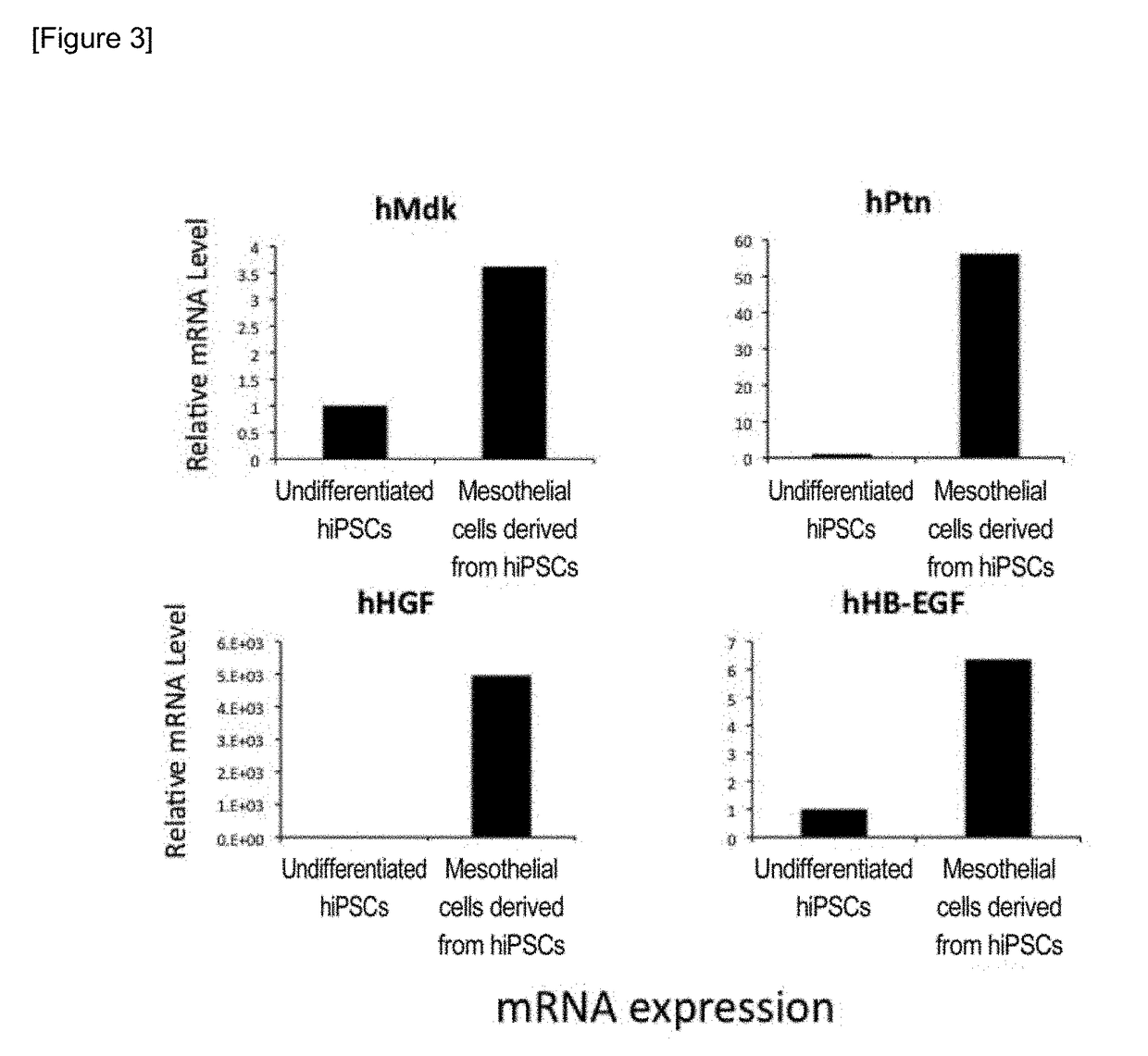Method for producing mesothelial cells and a cell sheet for preventing adhesion
a mesothelial cell and cell sheet technology, applied in the field of mesothelial cell and cell sheet production, can solve the problems of postoperative adhesion, prolong the operation time, increase the risk of blood loss,
- Summary
- Abstract
- Description
- Claims
- Application Information
AI Technical Summary
Benefits of technology
Problems solved by technology
Method used
Image
Examples
examples
[0074]1. Induction of Differentiation from Human iPS Cells into Liver Mesothelial Precursor Cells (Embryonic Liver Mesothelial Cells)
[0075]Differentiation from human iPS cells into functional liver mesothelial precursor cells was induced.
[0076]Human iPS cells (obtained from RIKEN BRC) were cultured feeder-free on matrigel in the following medium to maintain an undifferentiated state.
[0077]Human iPS Cell Maintaining Medium
[0078]StemSure (registered trademark) hPSC medium Δ (wako)
[0079]5 ng / mL bFGF (gibco)
[0080]Subsequently, undifferentiated human iPS cells were cultured in suspension in the following Mesoderm differentiation inducing medium supplemented with 5 ng / mL of BMP4. 1 to 3 days later, 5 ng / mL each of BMP4, Activin A and bFGF were further added and cultured for 1 to 5 more days at 37° C. and 5% carbon dioxide to differentiate the cells into mesoderm.
[0081]Mesoderm Differentiation Inducing Medium
[0082]Iscove's Modified Dulbecco's Media (Life Technologies)
[0083]20% Fetal Bovine...
PUM
 Login to View More
Login to View More Abstract
Description
Claims
Application Information
 Login to View More
Login to View More - R&D
- Intellectual Property
- Life Sciences
- Materials
- Tech Scout
- Unparalleled Data Quality
- Higher Quality Content
- 60% Fewer Hallucinations
Browse by: Latest US Patents, China's latest patents, Technical Efficacy Thesaurus, Application Domain, Technology Topic, Popular Technical Reports.
© 2025 PatSnap. All rights reserved.Legal|Privacy policy|Modern Slavery Act Transparency Statement|Sitemap|About US| Contact US: help@patsnap.com



